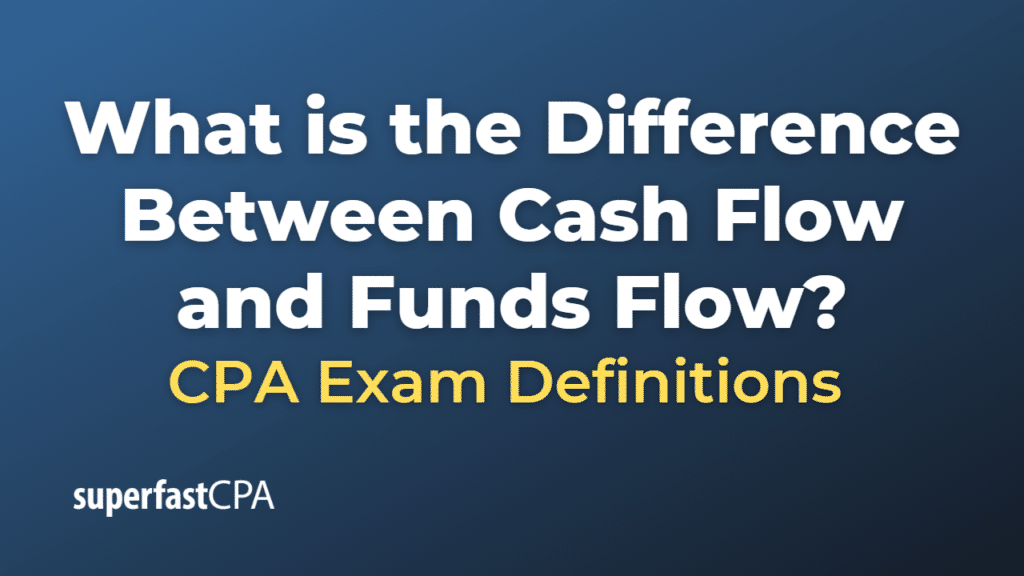Difference Between Cash Flow and Funds Flow
Cash Flow and Funds Flow are two different financial concepts used in analyzing a company’s financial health and liquidity:
- Cash Flow: This represents the net amount of cash and cash equivalents moving in and out of a business during a specific period. Cash flow can be positive (when a company receives more cash than it spends), or negative (when a company spends more cash than it receives). Cash flow can be analyzed from three perspectives: operating activities (cash generated from the core business operations), investing activities (cash used or generated from investing in assets), and financing activities (cash received or paid through raising or repaying debt, issuing or buying back equity, and paying dividends).
- Funds Flow: The term “Funds Flow” is used less commonly and can be somewhat more ambiguous. It typically refers to the movement of financial resources from one entity or section of a business to another. Funds Flow can encompass not just cash, but other financial resources as well. It’s often used to study the changes in a company’s working capital (current assets minus current liabilities) over a period of time.
In Funds Flow analysis, the focus is on the sources of funds (such as operations, sale of assets, or issue of shares or debt) and the application or use of these funds (such as acquisition of assets, repayment of debt, or payment of dividends).
In essence, while Cash Flow looks specifically at the inflows and outflows of cash in a business, Funds Flow looks more broadly at the changes in working capital and how financial resources are used within a business.
Example of the Difference Between Cash Flow and Funds Flow
Let’s illustrate this with an example of a hypothetical company, “GreenTech Energy Corp.”.
Cash Flow: For fiscal year 2023, GreenTech reports the following:
- Cash flow from operating activities (such as revenues from selling electricity): $500,000
- Cash flow from investing activities (such as buying new equipment): -$200,000
- Cash flow from financing activities (such as issuing new shares or repaying debt): $100,000
GreenTech’s net cash flow for the year would be calculated as the sum of these: $500,000 – $200,000 + $100,000 = $400,000. This represents the net increase in the company’s cash and cash equivalents during the year.
Funds Flow: Now, let’s say GreenTech started the year with a working capital (current assets – current liabilities) of $300,000 and ended the year with a working capital of $350,000.
This means there was a net increase in the working capital (funds available for use in the business) of $50,000. This might have occurred, for example, because GreenTech sold more electricity (increasing its current assets) and/or paid off some of its debts (decreasing its current liabilities).
The funds flow statement would then detail how GreenTech obtained these funds (for example, from operating profits or issuing equity) and how it used them (for example, to purchase new equipment or repay debt).
In this example, GreenTech’s cash flow statement provides a detailed picture of the company’s cash transactions during the year, while its funds flow analysis provides a broader view of changes in its working capital and how it sourced and used its funds.













